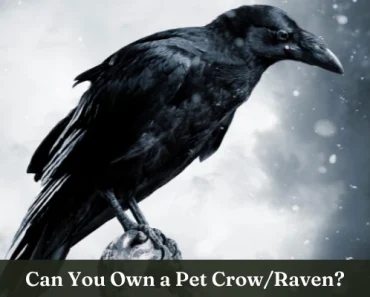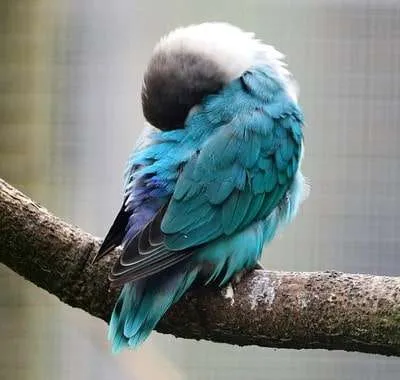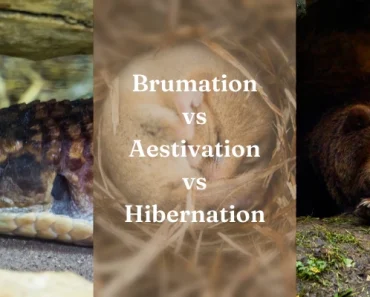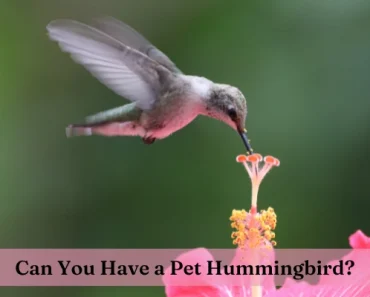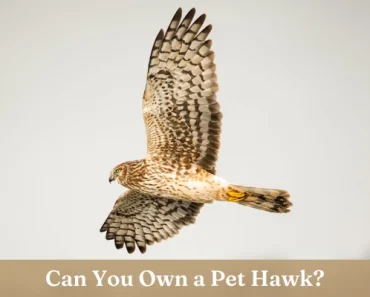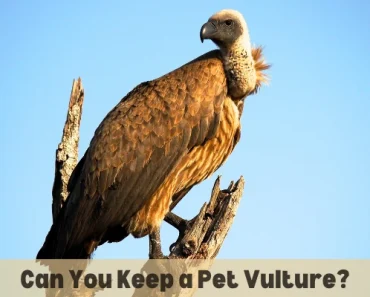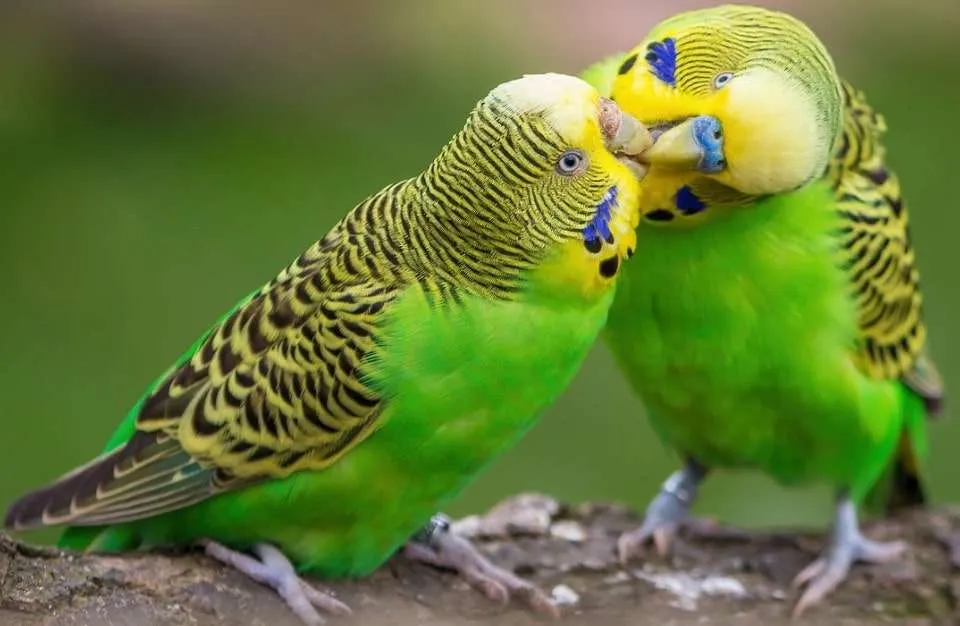
Parakeets are considered a group of small to medium-sized birds. According to Wiki and other sources, there are about 115 to 120 species that fall under the parakeet group.
Budgies are a part of this group and are one of the more popular parakeets in the United States.
Pet owners love their budgies for their affectionate ways, their ability to talk, their beautiful colors, among many other reasons. While they require some maintenance, they are easier to care for than many other birds.
But are parakeets right for you? Do budgies fit your lifestyle? Let’s find out!
Are Parakeets Good Pets?
Parakeets are good pets for the right bird owners and can be great birds for beginners. Budgies are playful, they talk and sing, and are very social little birds. They are lovers of food and mimic sound and speech as well as any other pet parrot.
Budgies are easy to care for, not too expensive compared to other pet birds, and they will serenade you with their songs.
These parakeets can live 5 to 10 years in captivity. They are very smart little birds that have been known to improve the moods of their pet owners.
These little birds like to be very social and will love some attention from you. They do work better in pairs but if you only get one, be sure to provide your new bird with the necessary attention it needs. Read on to learn more.
Parakeet (Budgie) History & Origin
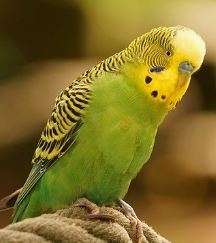 Parakeets are a part of our ancient history and are found all over the world. As mentioned, there are about 115 to 120 small to medium-sized species of birds in the parakeet group.
Parakeets are a part of our ancient history and are found all over the world. As mentioned, there are about 115 to 120 small to medium-sized species of birds in the parakeet group.
Before they became our exotic feathered friends they are today, past humans used parakeets as food. Yes, food.
There are approximately 25 to 30 different species of parakeets living in America that also include other subspecies. The budgie is one of these species.
The term, parakeet, can be confusing because most people think that it is a specific bird breed when actually it consists of the 115 to 120 different types of birds grouped with the budgies.
Budgie is the nickname of one of the more popular parakeet species in the United States, most commonly known for its yellow and green colors.
Budgies are the only species in the genus Melopsittacus, but some people think of parakeets and think they all are the same type of bird. It can be a very confusing subject, I know. Even the experts still debate about the term, Parakeet, and what it actually means.
Parakeet is the English term for the budgie. Again, it can get confusing, but just know that parakeets are budgies and budgies are parakeets, but there are many other species of birds in that group.
Parakeet (Budgie) Facts
Parakeets are seed-eating (in the wild) parrots that are nicknamed the budgie in the United States.
You will find budgies at almost all of the pet stores you visit. They are very popular among pet owners. They are inexpensive compared to most other parrots that can talk and mimic sounds.
They are found in the wild in drier parts of the outback in Australia where they originated, co-exist with humans now, and have survived for millions of years there.
They’ve endured a lot in their survival to become the 3rd most popular pet among pet owners all over the world.
They’ve been living around humans for over the past 50,000 years. One of the reasons budgies have been able to survive for so long is because they don’t have to be still to breed. They can breed while they are moving.
Now that you know a little more about budgies, let’s discuss what parakeets are as a whole to give you a better understanding.
What are Parakeets?
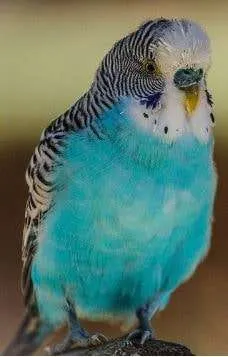 The budgerigar, or budgie, is mainly referred to as a “parakeet” in the United States.
The budgerigar, or budgie, is mainly referred to as a “parakeet” in the United States.
The parakeets you see in the pet stores are bigger than the wild parakeets. Wild parakeets grow to be only about 7 inches long and are mainly found in their native color of green.
The colorful birds you see in the pet stores and from dealers are bred to produce the various colors you see among this species of pet bird.
Pet parakeets can grow as long as 18 inches in length from the tip of their head to their tail. The tail feathers are long and tapered which make up for about half the parakeet’s body length.
There are only one species of budgie in the group of small to medium-sized birds that are known as parakeets.
What aren’t Parakeets?
Parakeets are designated as small to medium-sized parrot birds, but not all small to medium-sized parrots fit into this group.
One of the main distinguishing characteristics of other smaller parrots compared to the parakeets is that the parakeets have long, tapered tails. The other birds do not have this characteristic. Many other small to medium-size parrots have more of a square tail.
Here’s a list of some of the more popular birds that are NOT considered parakeets:
- Caiques
- Cockatiels
- Cockatoos
- Eclectus
- Pionus Parrots
- Poicephalus Parrots
Types of Parakeets
Parakeets can be divided into groups.
Asiatic Parakeets
One group is known as the Asiatic Parakeets. The Asiatic Parakeets originated near India, Indonesia, Sri Lanka, and other nearby regions.
Some birds that fall under this group include:
Alexandrine Parrots – Quieter medium-sized parrots that are bright, independent, talk, and can learn tricks.
Indian Ringneck Parakeets – Talkative birds that are outgoing, but require a patient and experienced owner to be tame.
Moustached Parakeets – These birds get their name from their feathers. Their feathers at the crest look like a groomed mustache. They also have outgoing personalities.
Plum-Headed Parakeet – Beautiful, medium-sized parrots that get along with other birds and aren’t as aggressive as some of the other birds.
Grass Parakeets
Another group is known as the Grass Parakeets. The Grass Parakeets originated in Australia.
Some popular birds that are included in this group are:
Bourkes Parakeets – Good for new pet bird owners. They are known to be calm birds that have no problem finding a way to entertain themselves without you.
Rosella Parakeets – Beautiful and bright birds that aren’t the best talkers of the parrots. These birds can whistle well, but only learn a minimal amount of words.
Scarlet Chested Parakeets – Small, colorful birds that tend to be more on the quiet side and typically very peaceful.
There are many different parakeets to choose from but the budgie is regarded as the most popular among pet bird owners.
Characteristics & Traits of Parakeets
No matter which parakeet you get, they are all classified as very intelligent birds. They are also very social birds that love to interact with their owners and other parakeets.
They can grow a very strong bond with their owners that will last a lifetime as long as they get the proper handling to stay tame.
They are small in size and can grow to about 18 inches long. I know that sounds long when classifying them as small birds, but the reason for that is because their tails are about half of that length, so their body isn’t that long.
These birds are actually of a slender build with long, tapering tails that makes them seem longer.
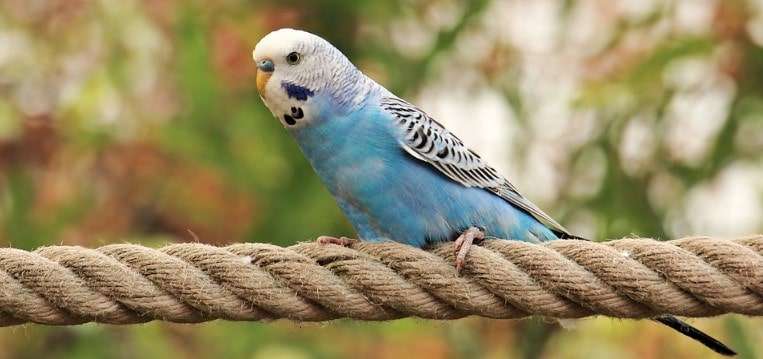
Cost
Parakeets are great birds for first-time pet bird owners because they are fairly inexpensive compared to other birds.
They are smart, they take up little space, can talk and sing, are very lovable, and cost under $100. It is easy to see why they are the 3rd most popular pet in the world.
Most parakeets in pet stores can range anywhere from $10 to 15 up to $50 to $60. The price varies just depending on where you get your budgie from and what color parakeet you get.
Temperament
Budgies are easy birds to tame, especially if you get your parakeet at a young age. They are gentle and loving birds that are better in pairs since they are such social birds.
If you have a pair of budgies, they will bond with each other. However, they may bond less with their human owners in pairs. They may not mimic speech as well in pairs either.
These are some playful and active birds that are quieter than many other types of pet birds.
Colors
I am more familiar with budgies that are mainly green and yellow, but budgies come in many different colors. Budges are bred in captivity to produce budgies in the following colors.
- Blues
- Grays
- Whites
- Yellows
Diet
Budgies need a variety in their diet consisting of primarily high-quality pellets, but also fresh vegetables and fruit.
High-quality pellets are recommended over seeds because seeds can cause bacteria to build up over time that can contribute to your budgie having health issues and a shorter lifespan. If you are feeding your budgie seeds, consider converting your bird over to a pellet-based diet.
Some foods should be avoided in your bird’s diet. Check out what fruits and veggies they can eat below. Then check out the foods that are bad for them.
| Broccoli Cabbage Carrots |
Cauliflower Corn Green Beans |
Peas in Pods Spinach Sweet Potatoes |
| Apples Bananas Blueberries |
Mangos Melons Nectarines |
Oranges Peaches Strawberries |
| Apple Seeds Avocado Caffeine |
Chocolate Fruit Pits Fat |
Garlic Onions Salt |
Care
Parakeets need a lot of mental stimulation and social engagement. If you are not getting a pair, it is important to spend a lot of time with your bird and engage with it. Even if you have a pair, they still need lots of your love and attention.
When you get your bird home, you may think that you can place the cage anywhere and that will be fine. However, your bird needs to be wherever you spend most of your time when you are home.
To keep your bird happy, it’s best to place the cage wherever you are the most when you are home.
Do not place your bird’s cage in the kitchen. Certain fumes from cooking oils and sprays can be bad for your budgie.
Cage Maintenance
Budgies are active and very playful. Your budgie will need a good-sized cage to be able to play and be active.
The cage needs to be lined at the bottom with regular copier paper or paper towels. Doing this will make cleanup a breeze.
Just remove the paper when it becomes soiled and clean the entire cage, including the bars with soap and water. Then add new paper after you’ve cleaned the cage and you are done.
Provide your bird with several perches and a selection of toys. Switch the toys out every so often so your bird doesn’t get bored with the toys. Toys will help your bird stay stimulated and entertained.
I suggest getting a mirror so you can laugh your head off when you see your bird engage the mirror.
Grooming & Hygiene
Staying on top of a grooming and hygiene routine will ensure your bird stays healthy and clean. Bathing is an important part of this routine.
Bath Time
Some pet parakeet owners will give their bird a bath in the shower, sink, or some type of container or tub. Other pet bird owners will get a spray bottle and mist their bird with water as a bath. It is up to you, but both ways will work just fine.
No type of cleaning solvent is needed. You should only use water, which is enough to get the bird clean. Using some type of cleaning solution can irritate your bird’s skin.
Nail Trimming
Parakeets need their nails trimmed occasionally. To help with their nails, get rougher perches to help keep your bird’s nails from getting too long.
Feather Trimming
Some owners choose to get their bird’s feathers clipped. I don’t get our cockatiel’s wings clipped because I like that they can fly around and get more exercise.
“Sam & Dean”, our pet cockatiels, seem to be more active and happy when they are flying around. So we choose to not get their wings clipped.
Plus, I don’t see any chance of them ever getting loose or flying away, so there is no reason for us to do that with our birds.
If you decide to get your bird’s wings clipped, schedule an appointment with your local vet to get a professional to handle it, which is the recommended way to go.
Do Parakeets Talk?
Yes, budgies can talk and mimic the sounds of their owners. However, they are likely to talk and mimic less if you have a pair.
Having a pair has its benefits because you will get to see them interact with each other, which can be very entertaining. Plus, they will create a strong bond with each other.
Exercise
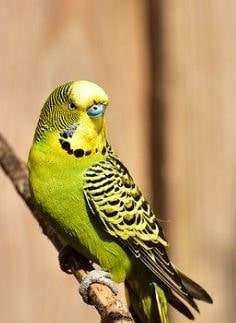 Budgies need to be able to fly around to stay active and be healthy. Time should be given to your budgie so they fly around in a room for an hour or two per day to get their exercise in.
Budgies need to be able to fly around to stay active and be healthy. Time should be given to your budgie so they fly around in a room for an hour or two per day to get their exercise in.
Set up perches throughout a room to give your budgie places to fly onto to help your budgie navigate the room better.
Without this, they tend to end up hitting walls occasionally and we don’t want that.
Get your budgie lots of toys to keep it active. They like toys, but make sure you get a variety so your budgie doesn’t get bored.
Common Health Ailments
- Goiters
- Hepatic Lipidosis
- Kidney Tumors
- Lipomas
- Ovarian Tumors (female)
- Psittacosis (Parrot Fever)
- Mites
- Testicular Tumors (male)
- Xanthomas
Breeding
Parakeets often breed in groups. If space is limited, there can be some conflict between breeding pairs, but other parakeets can help in the breeding process.
Just having the presence of the other parakeets around will be more encouraging for the breeding pair to breed.
Most breeders prefer to breed in pairs because most want to know which birds are breeding together. Another reason breeders prefer their parakeets to breed in pairs versus groups is to avoid conflict with other birds that aren’t part of the breeding pair.
Where to Get Your Parakeet
When thinking about getting a parakeet as a pet, consider trying to find a parakeet adoption agency, pick a reputable dealer, or purchase one from your local pet store.
Adopting a Parakeet
Adopting a parakeet may be an option for you.
If you want to know more about adopting a parakeet, check out this website.
When adopting a parakeet, the main focus of the adoption agency is to ensure you are ready for a new pet in your home. This will help prevent the parakeet from having to find another forever home if you can’t take care of it.
So be prepared to answer a lot of questions about your life and lifestyle, but just know that they require you to go through such a process to ensure you are ready to adopt.
Many adoption agencies will also require a small fee for the adoption process. That fee will depend on the agency.
Getting a Parakeet from the Pet Store
You can find budgies in many pet stores. Petco and Petsmart both have them as well as many other mom-and-pop-style pet stores.
At Petco and Petsmart, the price ranges between $20 to $30 for a typical budgie.
Choosing the Right Breeder
If you plan to get your parakeet from a dealer, make sure you go with a reputable dealer. The price for a parakeet from dealers will be higher than pet stores with a range of $50 up to a few $100.
Ask for references from other people that can verify the dealer. Check online for any complaints about the dealer.
If they are selling budgies on Craigslist or another similar platform, they are likely not reputable dealers.
Things to Think About Before Getting a Parakeet
If you are thinking about adopting or buying a parakeet, here are some of the things you should know and plan for.
- Take some time and do your research (which you are doing here, so good job)
- Check adoptions, pet stores, and different breeders for parakeets. Don’t just buy the first one you see. Shop around.
- Try to get as much social time in with the bird before purchasing to get more of an idea if this bird is right for you. This may also help get you started with a smoother transition into your home for your bird.
- Plan to handle and socialize with your new best friend daily
- Think about the commitment involved in owning a pet parakeet and then think about it again just to be sure you are ready.
- Look for signs of an unhealthy bird before you purchase your new friend
How to Pick a Healthy Parakeet
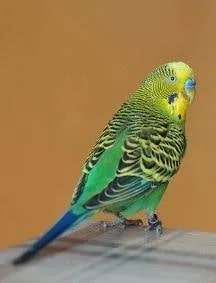 Look for signs of a non-responsive bird. If the bird is unhealthy or sick, it won’t be as active and alert. Make sure the bird is active and moving around.
Look for signs of a non-responsive bird. If the bird is unhealthy or sick, it won’t be as active and alert. Make sure the bird is active and moving around.
Analyze the budgie’s appearance. You will want to check their feathers to see if they look disheveled. The feathers should be shiny, smooth, and should lay flat on their body. The scales on their feet, their nails, and their beak should all be smooth.
Check to make sure the nails and beak are not overgrown.
These are all signs that the budgie has been taken care of. If the parakeet looks sick, use your better judgment.
Ask for records of vet visits. Ask for background history on the birds. Make sure you get as much information as possible about the bird you are planning to get.
Supplies Needed
Cage: The cage should be at least 20 inches in length by 12 inches deep by 18 inches in height with horizontal bars so your budgie can climb easier. Go with a stainless steel cage because other types of metals can be toxic to budgies.
Cage Stand: You need something to sit the cage on. The stand should be sturdy and at least the dimensions listed above. The stand needs to have a flat surface and be stable so there is no chance of tipping over.
Cage Cover: You need this to cover the cage so your budgie will stay quiet and sleep..
Perch: You should have a variety of different-sized perches placed on different levels throughout the cage for your budgie to move to and from.
Toys: Get a variety of toys and change them out often so your budgie doesn’t get bored with the toys they have.
Food: Your budgie needs high-quality pellets along with fruits and vegetables for a completely balanced diet.
Other Accessories: Food and water bowls, treats, grooming supplies, and more. Check out the shopping list below to view some of these products.
Shopping List for Your Budgie
Products you need for your new pet budgie.
- Cage
- Cage Cover
- Cage Litter
- Perches
- Toys
- Bird Bath
- Food Bowl
- Water Bottle
- High-Quality Parakeet Food
- Treats
- Cuttlebone
- Cuttlebone Holder
- Spray Millet
- Grooming Supplies
- Vitamins/Supplements
- Play Gym
Similar Birds
Black-Capped Conures – This bird gets its name from its brown and black crown along with its scale-patterned neck. It can grow to around 10 inches in length.
Indian Ringneck Parakeets – I spoke a little about these birds earlier. But to add to that, these birds are medium-sized birds that grow to about 16 inches in length and 4 ounces in weight.
Lovebirds – Lovebirds get their name because of their loving and intense bond with their mate. These birds can grow to be between 6 to 7 inches in length.
Parrotlets – They look very similar to parakeets but only grow to be around 5 inches in length, making them slightly smaller than parakeets.
Final Thoughts
This probably feels like a ton of information to take in…and it is. I know it’s a lot but I wanted to make sure you have all the information you need to decide on whether a parakeet is the right pet bird for you.
In summary, parakeets can be great pet birds if you are willing to put in the time and effort it takes to give them the attention and care they need. That goes with any animal, not just parakeets.
They are entertaining, lovable little creatures that will be the joy of your day in many instances.
If you don’t think a parakeet is right for you, check out articles I’ve written about other pet birds.
